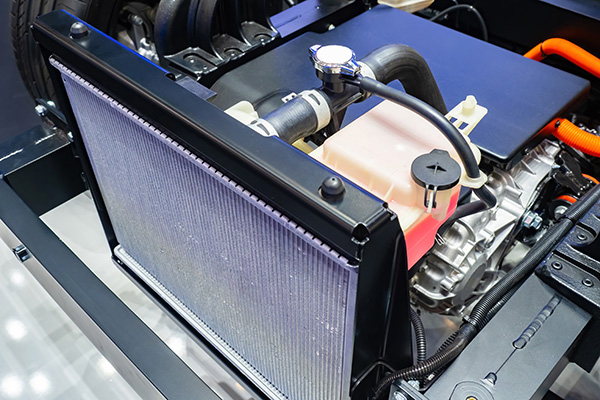
Have you ever wondered how your car keeps its cool, even on scorching summer days or during long drives? The answer lies within its cooling system, an essential component that prevents your engine from overheating and ensures optimal performance.
Understanding the Basics
At its core, a car's cooling system regulates the engine's temperature, which generates a tremendous amount of heat during operation. Without proper cooling, the engine would quickly overheat, leading to potential damage and breakdowns. To prevent this, the cooling system works tirelessly to dissipate excess heat and maintain the engine at an optimal operating temperature.
Key Components of a Cooling System:
Radiator:
The radiator is the heart of the cooling system and is responsible for dissipating heat absorbed by the engine coolant. As the coolant circulates through the engine, it absorbs heat before flowing into the radiator, where it releases heat to the surrounding air through a series of cooling fins.
Water Pump
The water pump plays an important role in circulating coolant throughout the cooling system. Driven by the engine's crankshaft, it propels coolant from the radiator through the engine and back to the radiator in a continuous loop.
Thermostat
The thermostat acts as a gatekeeper, regulating the flow of coolant based on the engine's temperature. When the engine is cold, it remains closed, directing coolant flow through a bypass circuit to facilitate faster warm-up. The thermostat opens as the engine reaches operating temperature, allowing coolant to flow through the radiator for cooling.
Cooling System Operation
The cooling process begins when the engine heats up during operation, causing the coolant temperature to rise. As coolant absorbs heat from the engine, it becomes hot and flows into the radiator. Inside the radiator, coolant releases heat to the surrounding air as airflow generated by the vehicle's movement or electric fans passes through the radiator fins. Cooled coolant returns to the engine to repeat the cycle, maintaining optimal operating temperature.
Coolant Types
Choosing the right coolant for your vehicle is essential to ensure optimal performance and longevity of the cooling system. Coolants come in various types, including ethylene glycol-based and propylene glycol-based formulas, each with its own set of additives and corrosion inhibitors tailored to specific engine requirements. Consult your vehicle's owner's manual or seek guidance from a professional mechanic to determine the correct coolant type for your car.
Cooling System Maintenance
Regular coolant maintenance, such as flushing and replenishing coolant levels, is vital to prevent corrosion, maintain proper cooling system function, and extend the lifespan of engine components. By staying proactive with coolant maintenance, you can help safeguard your vehicle against overheating and costly repairs down the road.
Ready to ensure your car's cooling system is in top shape? Schedule a maintenance check today at Spectrum Car Care and keep your vehicle running cool all year round.